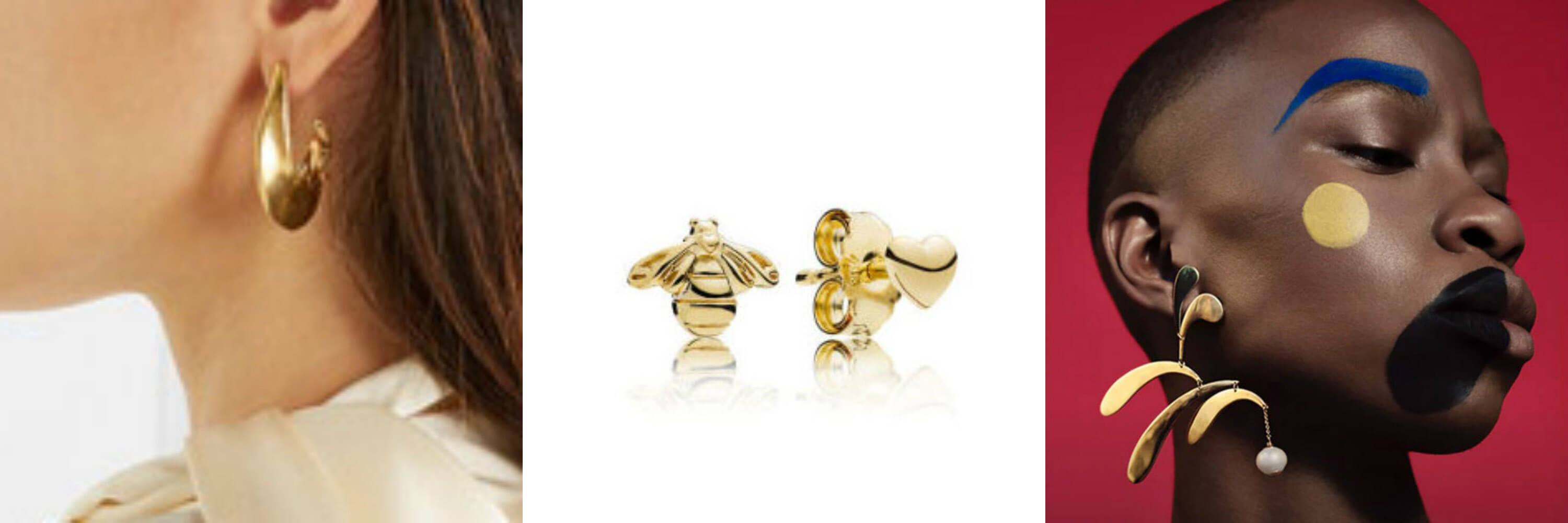It's a demi-fine day for jewellery
A demi-fine day for jewellery
Reading Time:
1 min {{readingTime}} mins
The sky-high price of gold is giving rise to an exciting new 'demi-fine' market sector prompting big name brands in the UK and around the world to invest heavily in its growth for 2018.
London department store Selfridges has become the latest retailer to get behind this new category, investing 'significantly' in an expanded mid-range Spring Summer 2018 collection featuring among others Missoma, Charlotte Chesnais and Astley Clarke.
Net-a-Porter has been doing demi-fine for a while and reports a 250% growth in demi-fine brands on their website while Pandora launched a new affordable collection for Spring Summer 2018 named ‘Shine’ featuring 18 carat gold plated, sterling silver jewellery.
But what is demi-fine jewellery?
Is it a 'here today gone tomorrow' gimmick or does it have a sustainable future?
In a nutshell, demi-fine jewels are stylish and high-end but affordable. Key to the growing demand for demi-fine jewellery is the ‘Instagrammability’ (is that a word?) of the items. They must be visually captivating and ideally, with a possibility for personalisation.
Growth of the sector, which last year was reported to be a steady 6%, could be boosted massively in 2018 by Britain’s Royal Wedding since Meghan Markle is a huge fan of demi-fine pieces.
On a recent royal visit to Scotland with husband to be Prince Harry, she was sporting a £45 Missoma Interstellar Ring, made from 18ct gold vermeil with a stone inset. The pictures sent the growing band of demi-fine followers into a frenzy.
She had previously been seen wearing Missoma stackable rings – which pretty well sum up the demi-fine style. Simple and beautiful and most persuasive of all, inexpensive.

Latest demi-fine collections from Pandora , Charlotte Chesnais and Missoma
Gold-plated silver or lower weight carat with semi-precious gemstones have proved popular – so long as they make good Instagram posts since according to Selfridges accessories buying manager Josie Gardner, this is how buyers in this market choose their treasures.
“The demi-fine customer discovers brands through Instagram and often buys niche labels and jewellery pieces in unusual shapes and materials," she observes. No surprise then that Selfridges are ploughing so much money into this new trend.
Alighieri and Pandora among popular demi-fine choices
So strong is the potential in the market that the owners of the Emma & Roe chain of jewellery stores in Australia and New Zealand are closing 24 of its 30 stores and concentrating resources throughout the remaining six on the demi-fine sector.
“The demi-fine market has been evolving for the past few years,” Emily Gordon-Smith, head of fashion at Stylus told The Business of Fashion.
“It’s for women in their 20s and 30s, who we call the "luxury hunter" and it’s definitely part the whole trend around self-gifting. Whereas the traditional consumer may have been about the it-bag or the statement shoe, it has now shifted to the area of semi-luxury jewellery.”
Alighieri, another brand being stocked by Selfridges, has enjoyed a strong performance in recent times, growing from £40,000 in turnover in 2016 to over £500,000 this year with pieces priced from £160 to £1200.
Retailers are focussing their efforts on the £300-£400 price points which is guaranteed to reach a broad demographic, in particular young buyers just starting out on their discovery of luxury jewels. Gimmick? Not likely.
Author:
Published:










